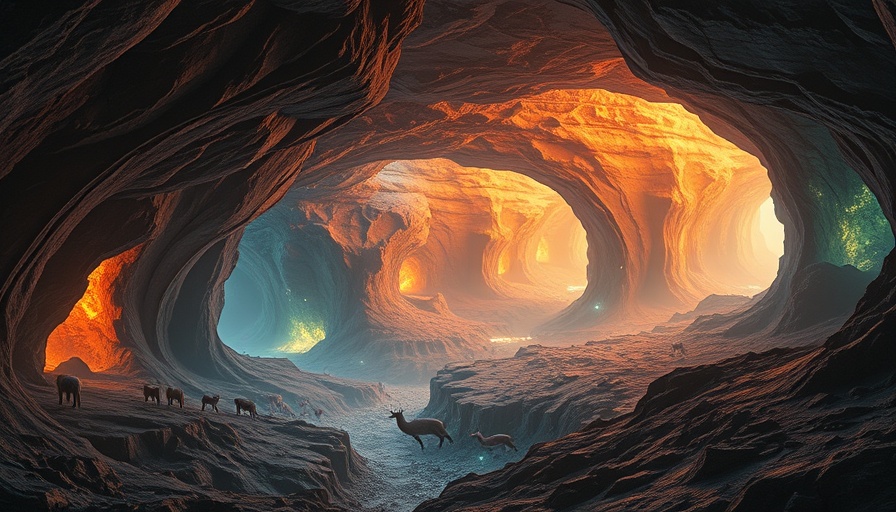
The Origins of Animal Migration: A Journey Through Time
Most people rarely think about what lies beneath the Earth’s surface, yet the tectonic activities can have profound effects on life above ground. Recent research from The University of Texas at Austin reveals how geological events over millions of years have shaped the evolution and migration of species, linking specifically the ancient ancestors of today’s elephants, giraffes, and even humans.
Understanding the Mantle's Role in Evolution
The research, published in Nature Reviews Earth & Environment, explores a significant geological phenomenon: a plume of hot rocks that emerged from the Earth’s mantle millions of years ago. This was no ordinary eruption; it provided the necessary conditions for the formation of a monumental land bridge that connected Africa and Asia around 20 million years ago. This connection not only allowed animal species to roam between the two continents but also marked the end of a 75-million-year isolation for Africa.
The Formation of the Land Bridge
In detail, the appearance of this landmass can be attributed to mantle convection—wherehot rocks rise and create a conveyor belt effect. Over millions of years, this geologic activity caused the uplift of land that was critical to closing the ancient Tethys Sea, which subsequently led to the emergence of the Mediterranean and Arabian Seas. This monumental shift facilitated animal migration and had a distinctly influential role in shaping various species, as Thorsten Becker, a co-author of the study, notes.
The Impact of Tectonic Movement on Animal Evolution
Researchers posit that the uplift of land due to tectonic movements directly correlates with evolutionary pathways. If there had been a delay of just a million years in connecting Africa and Asia, the trajectories of many species—including ancestors of modern mammals—could have diverged significantly. This insight sheds light on a fundamental question: How closely are geological processes tied to the development of life?
Insights into Earth’s Geological History
Data from the study reinforces the complex interplay between evolutionary processes and Earth’s dynamic surface. The conditions created during the uplift aided in aligning the flora and fauna across continents, while also providing new habitats for species like the cheetah and rhinoceros. This suggests that understanding geologic history not only enriches our comprehension of biodiversity but also provides vital clues about how environmental changes can influence species survival.
Future Implications for Our Understanding of Evolution
This research leads us to contemplate the broader implications of geological dynamics on contemporary organisms. Understanding the influence of the mantle on animal migrations allows for predictions regarding how current geological activities might shape future biodiversity. For instance, as climate change alters sea levels and landforms today, we must consider how similarly profound changes will impact future species.
Embracing a Holistic Perspective
Ultimately, the discoveries made about the past motivate a more comprehensive view of how interconnected our planet's systems really are. Events beneath the crust can dictate the course of species' evolutionary paths, which underscores the importance of preserving geological integrity as we face significant ecological transitions ahead.
Take Action: Elevate Your Understanding of Earth’s History
As you ponder the intricate connections between geological phenomena and biological evolution, consider engaging with local educational programs or museums that discuss Earth's history and evolution. Understanding our planet's past equips us to shape a better future.
 Add Element
Add Element  Add Row
Add Row 



 Add Row
Add Row  Add
Add 


Write A Comment